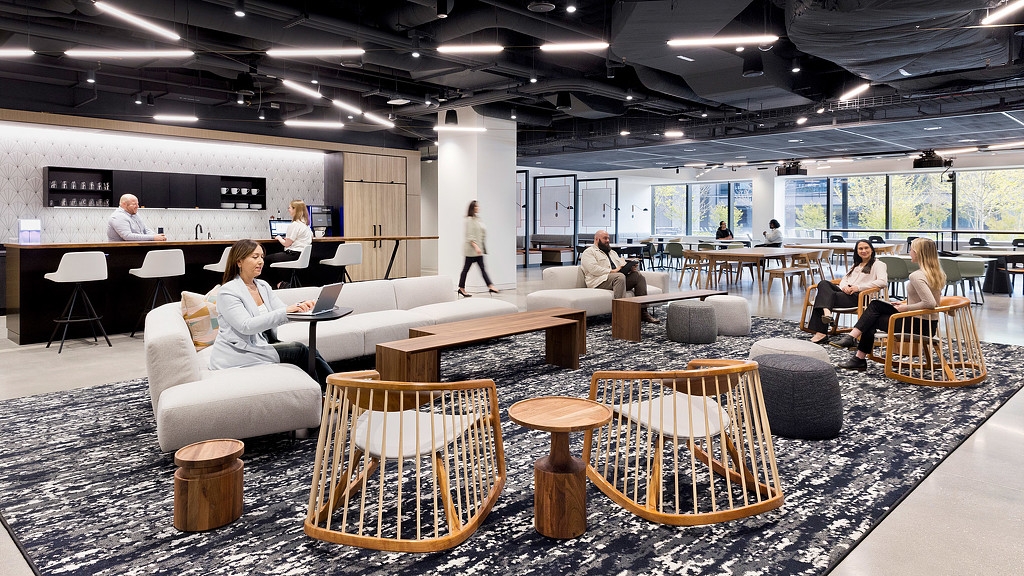Workplace Design: Creating Spaces That Inspire Productivity and Innovation

In today’s fast-paced corporate world, workplace design is no longer just about desks, chairs, and cubicles. It’s about creating an environment that fosters creativity, enhances productivity, and boosts employee well-being. A well-designed workspace can dramatically impact a company’s culture, performance, and employee satisfaction.
Whether you're building a new office or renovating an existing one, understanding the key principles of modern workplace design is essential.
What is Workplace Design?
Workplace design refers to the planning, layout, and furnishing of office spaces to support the needs of both the organization and its employees. It blends architecture, interior design, psychology, and ergonomics to create a functional, aesthetically pleasing, and productive work environment.
Benefits of Effective Workplace Design
A strategic approach to office design can lead to measurable business results. Here’s how:
1. Improved Employee Productivity
Smart layouts reduce distractions and provide areas for focused work, collaboration, and rest. Natural light, sound control, and ergonomic furniture all contribute to higher efficiency.
2. Enhanced Collaboration
Open and flexible spaces encourage teamwork and spontaneous interactions, leading to innovation and faster problem-solving.
3. Better Employee Well-being
Incorporating natural elements, proper lighting, air quality, and designated break areas supports mental and physical health.
4. Attract and Retain Talent
A stylish, functional office speaks volumes about your company culture. It helps you attract top talent and retain existing employees by offering a pleasant and engaging work environment.
Key Elements of Modern Workplace Design
To create a workplace that performs as well as it looks, focus on these core components:
1. Flexible Layouts
Work environments need to support both individual work and group collaboration. Think movable walls, modular furniture, and multipurpose rooms.
2. Biophilic Design
Integrating natural elements like indoor plants, wood finishes, and access to outdoor views can boost morale and reduce stress.
3. Technology Integration
Smart offices are wired for efficiency. Include plenty of charging ports, fast internet, and tech-enabled meeting rooms.
4. Ergonomics
Ergonomic chairs, adjustable desks, and proper lighting reduce physical strain and prevent workplace injuries.
5. Branding and Aesthetics
A workspace should reflect your brand identity. Use company colors, logos, and cultural motifs to make the space feel unique and engaging.
Trends in Workplace Design for 2025 and Beyond
Workplace design is always evolving. Keep an eye on these emerging trends:
-
Hybrid Work Environments: Offices are being reimagined to support hybrid teams with shared desks, video conferencing zones, and flexible meeting spaces.
-
Sustainability: Eco-friendly materials and energy-efficient systems are becoming non-negotiable.
-
Wellness-Centered Design: Features like quiet zones, nap pods, and wellness rooms are gaining traction.
-
Activity-Based Working (ABW): Employees choose the right space for the task at hand—be it a quiet pod or a brainstorming zone.
How to Start Redesigning Your Workplace
Ready to transform your office? Here's a step-by-step approach:
-
Assess Your Needs: Understand the nature of work, team sizes, and specific challenges.
-
Set Goals: Whether it's boosting productivity, improving collaboration, or supporting hybrid work, define clear objectives.
-
Consult Experts: Work with architects, designers, and HR professionals to create an inclusive, practical design.
-
Implement in Phases: Test new ideas in pilot areas before scaling up.
-
Gather Feedback: Continuously refine your design based on employee input.
Conclusion
Workplace design is more than aesthetics—it's a strategic investment in your company’s future. By focusing on flexibility, functionality, and well-being, you can build a space that not only looks great but also helps your team thrive.
Frequently Asked Questions (FAQs)
Q1. What is the main purpose of workplace design?
The main goal is to create a space that enhances productivity, supports employee well-being, and aligns with business objectives.
Q2. How does office design impact employee performance?
Design elements like lighting, noise levels, furniture, and layout directly influence concentration, collaboration, and overall job satisfaction.
Q3. What is biophilic design in the workplace?
Biophilic design involves incorporating nature—plants, sunlight, and natural textures—into workspaces to promote health and happiness.
Q4. How often should a workplace be redesigned?
Generally, a major redesign every 5–10 years is ideal, but small updates can be made more frequently to keep the space functional and engaging.
- Art
- Causes
- Crafts
- Dance
- Drinks
- Film
- Fitness
- Food
- Spiele
- Gardening
- Health
- Home
- Literature
- Music
- Networking
- Other
- Party
- Religion
- Shopping
- Sports
- Theater
- Wellness


